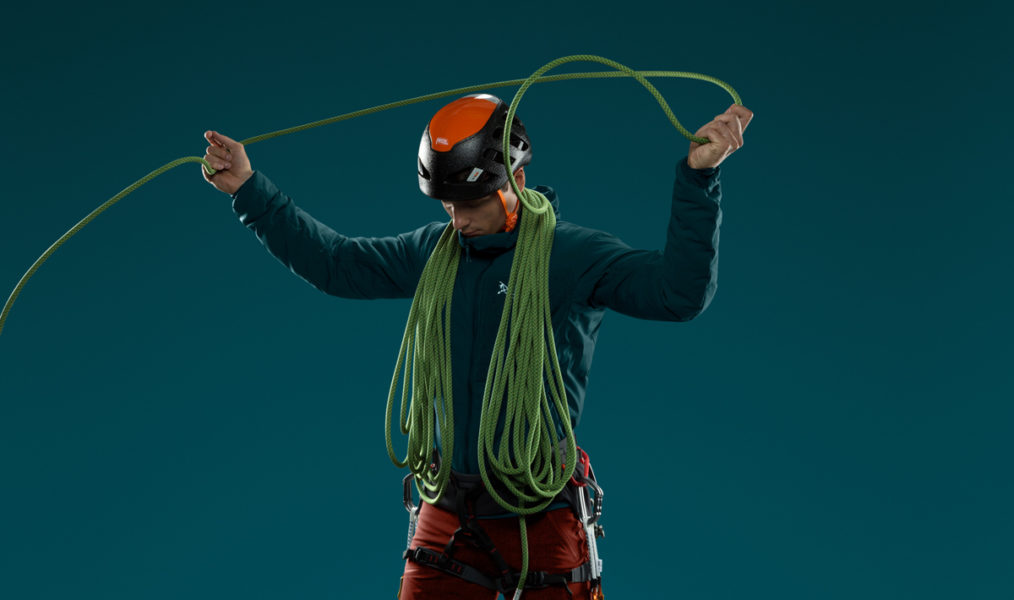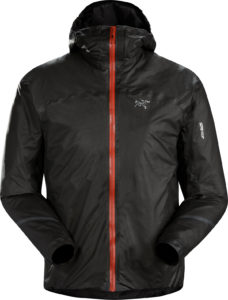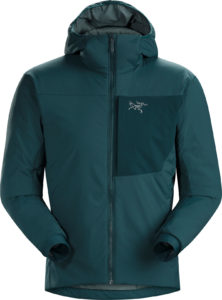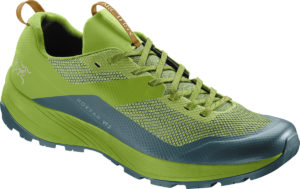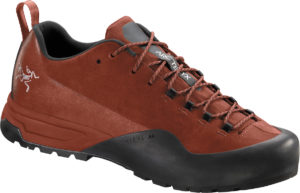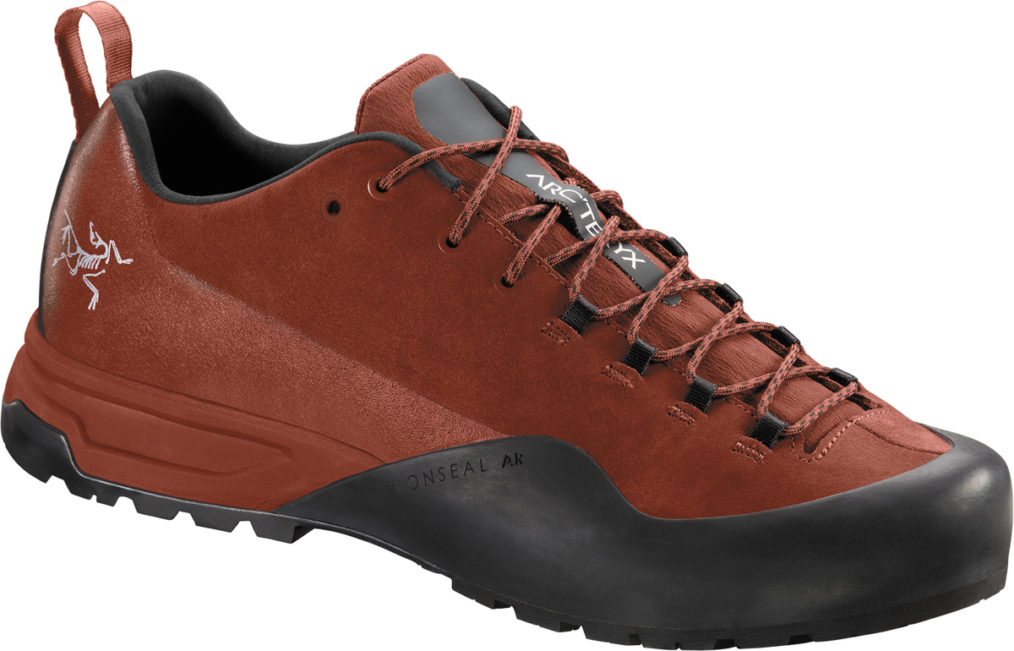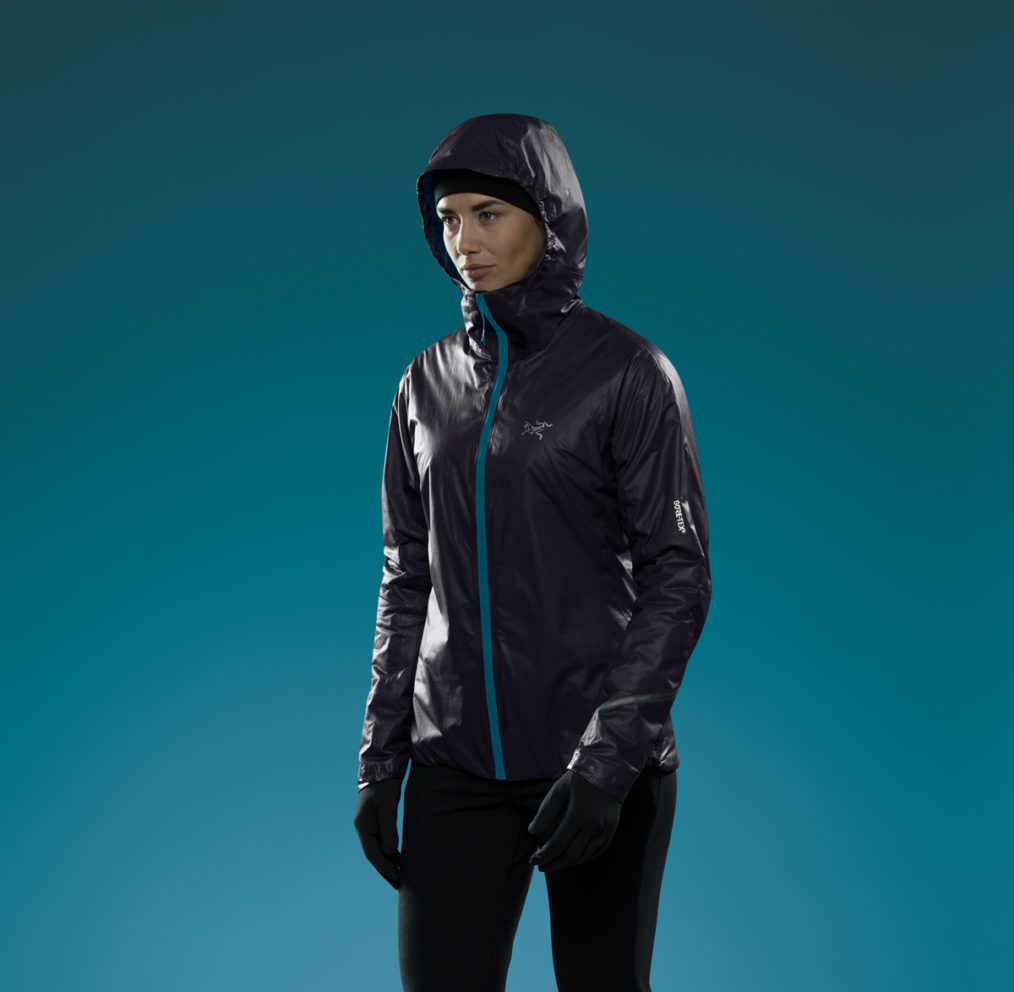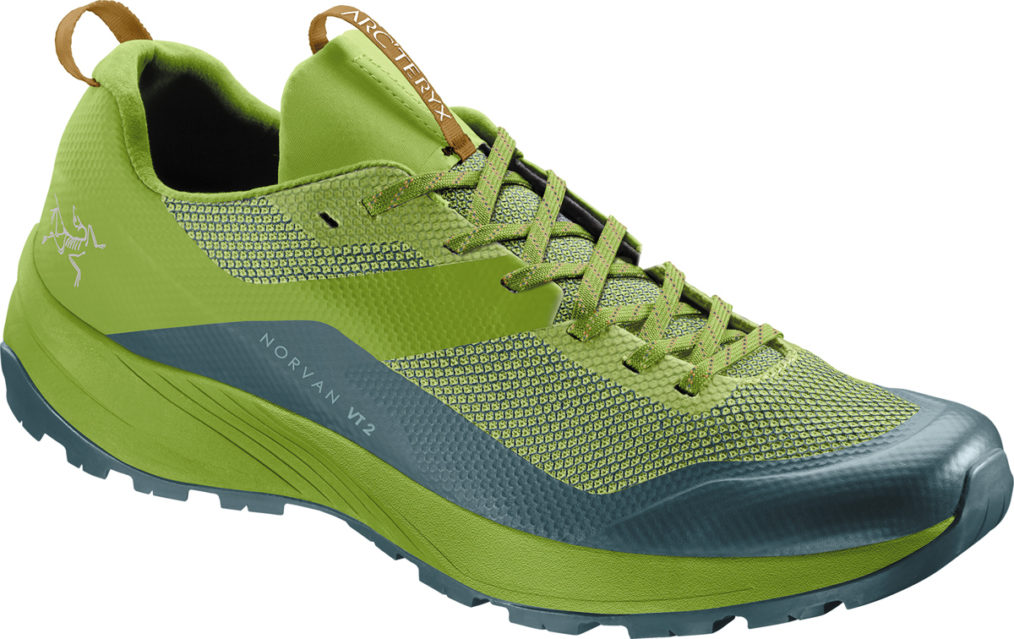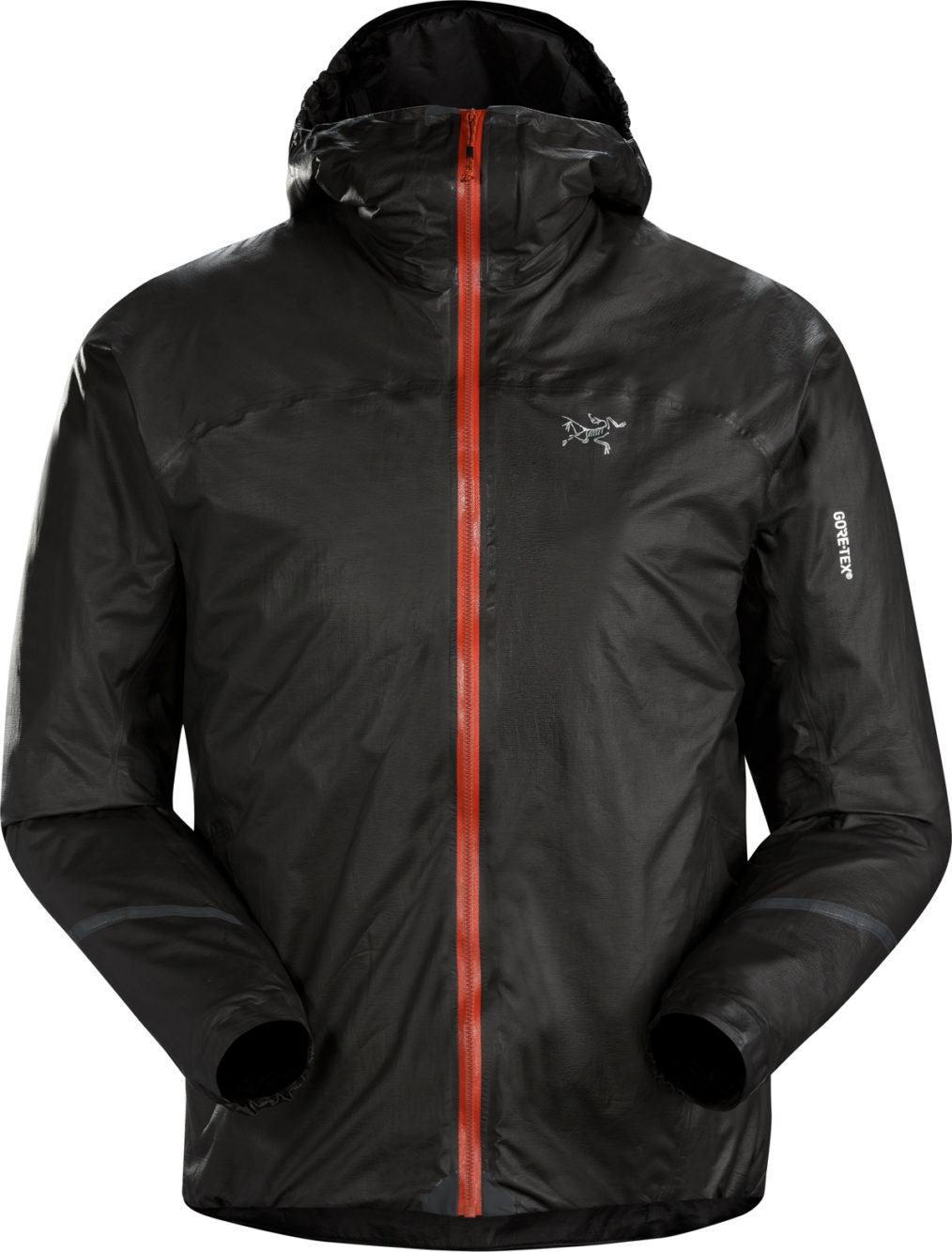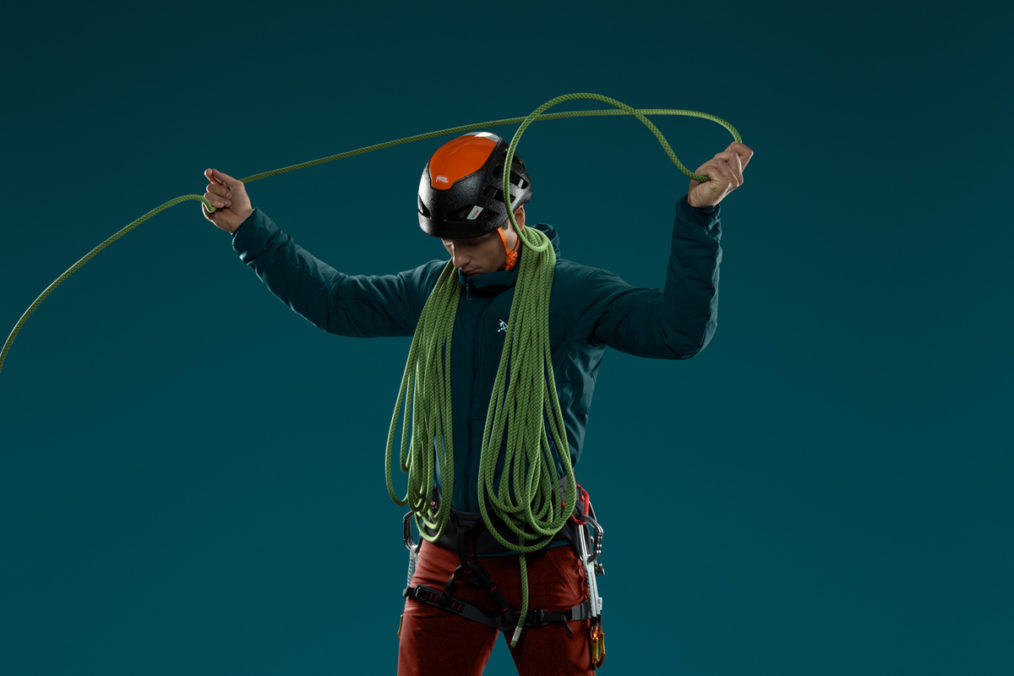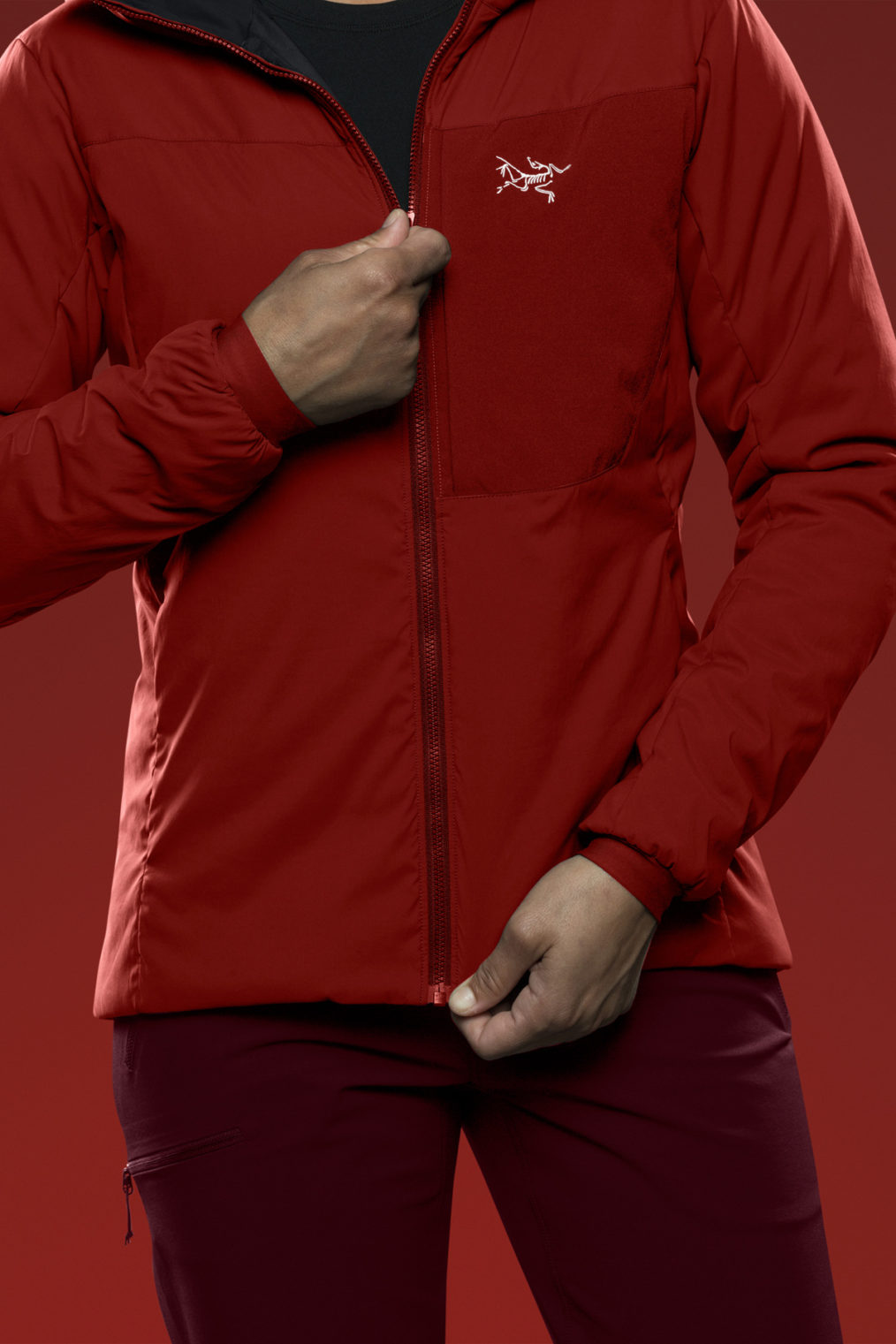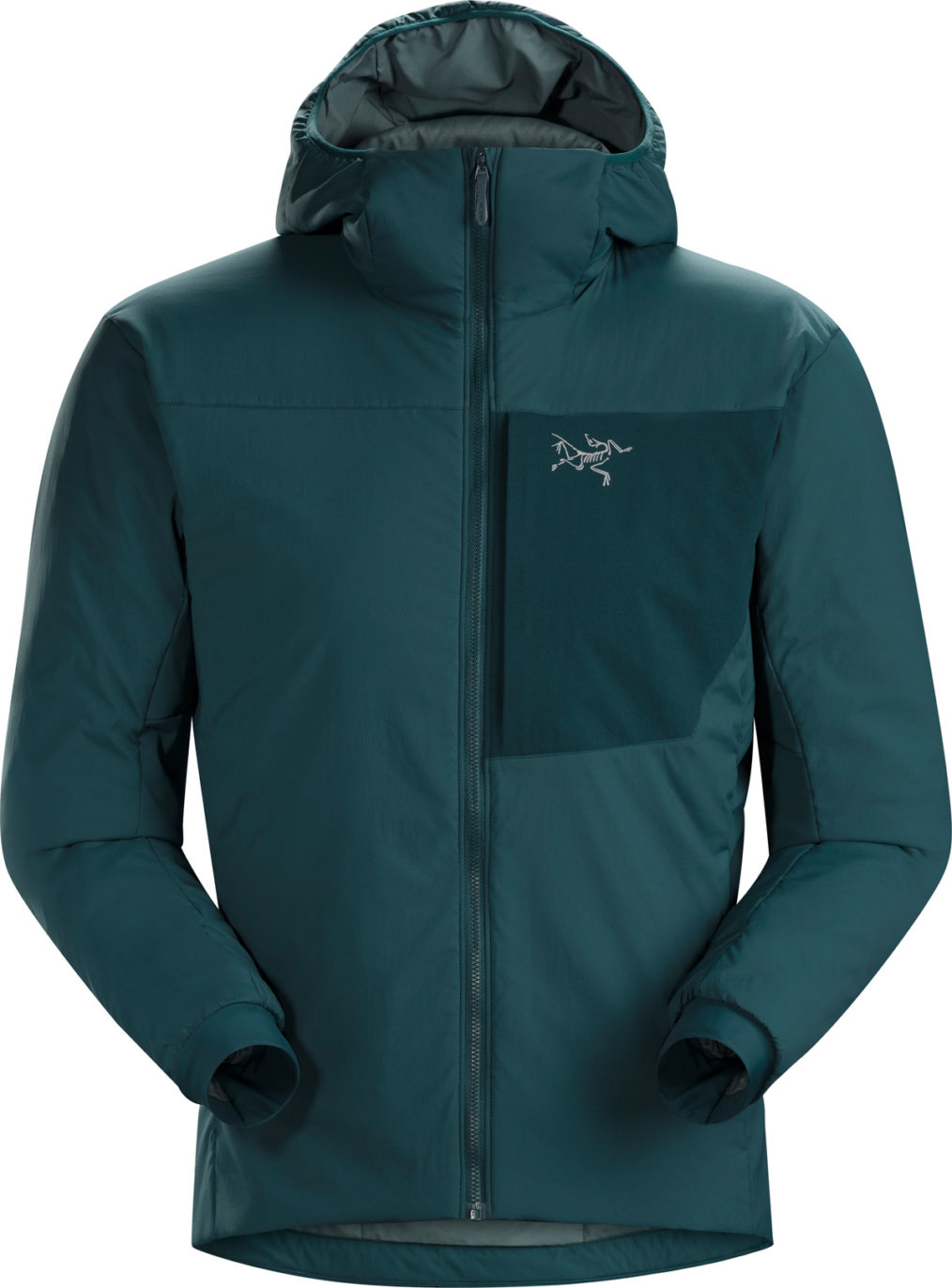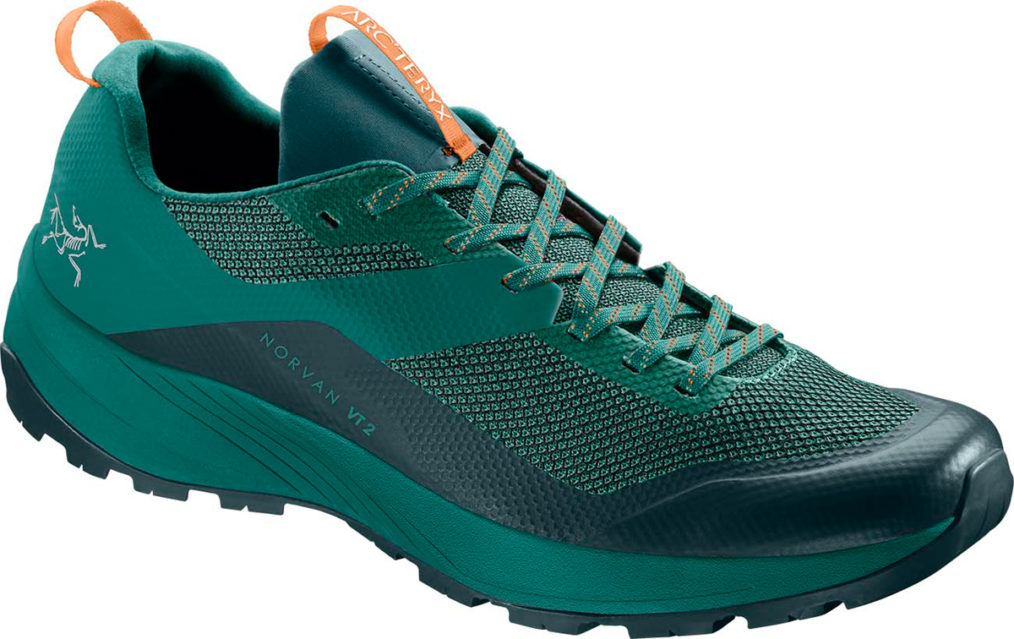Canadian brand Arc’teryx does things a little differently at outdoor shows like the recent ISPO event in Munich. The new stuff is hidden away behind carefully policed partitions, so rival brands and their designers can’t get an early preview.
And if you are deemed special enough to check out the new stuff, you get to spend an hour or so with Arc’teryx product specialists talking through not just what the new kit is, but how and why it’s designed as it is. If you’re a gear geek, it’s fascinating. Arc’teryx is arguably the most innovative outdoor brand around and every small decision tends to be made for a reason and not always the one you think. Anyway, the two big stories for next winter 2019 – in the shops around September time are the Norvan SL Insulated Hoodie, which is designed for running in proper cold conditions. And the Proton LT, a lightly insulated, but properly tough jacket for cold weather climbing and mountaineering use.
Norvan SL Insulated Hoodie
If the matt black. slightly rubbery, outside of the jacket looks familiar, it’s because it is, in effect, Gore-Tex ShakeDry, a super breathable waterproof fabric, that puts the membrane on the outside of the jacket. It’s basically the black stuff, or rather it’s a very thin layer of black paint over the white PTFE membrane. Its biggest plus point is that not only is it very light, it never wet wets out like conventional waterproofs. It’s not super durable – though Gore USA has a slightly tougher Gore Hikewear version on the way – but it’s light, very breathable and doesn’t use a water-repellent treatment. All good things.
Where it got interesting was keeping the construction simple, while still adding a body-mapped, lightweight Coreloft 40 insulated liner for winter running use. Turns out the way to keep things simple, was to effectively make the jacket inside out. So it has elastic hems on cuffs and main body, but they’re tucked away. There’s a roll-away hood. And a high-wicking liner fabric. The Coreloft 40 synthetic insulation has been mapped for optimum efficiency given that runners in any conditions, tend to work hard and run hot. So the entire front of the jacket is insulated, but the central back zone isn’t and event the crook of the elbow has been strategically let naked.
All this and the men’s version weighs in at just 270g, with the women’s at 235g. That would be pretty light for just a waterproof, with added insulation, it’s super impressive. As with other ShakeDry jackets like the Norvan SL Hoody, the new jacket isn’t suitable for pack use, but for ultra cold conditions running, when you need a mix of breathable wind, rain and snow proof outer with some added warmth, it looks like an interesting option.
Once available later this year, the jacket will retail for around €400.
Proton LT Hoody
In a sense the Proton LT is the Norvan SL Insulated’s polar opposite cousin in the sense that it’s designed for the sort of use where durability matters, but still for active use. It’s a lightly insulated, helmet-hooded mountaineering jacket that uses a new outer fabric called Fortius Air 20. The big deal with the new fabric is that it’s a claimed 60 times more durable than conventional fabrics used in similar applications measured using the industry standard Martindale test rig. Think continuous rubbing by an an abrasive disc.
Apparently the new fabric survived 60 minutes abuse without holing, while standard fabrics managed only a minute. It’s also super air permeable and was developed from scratch by Arc’teryx in partnership with fabric specialists for hardcore mountaineering use. It’s stretchy too thanks to a 16% elastane content. Inside there’s Arc’teryx’s Coreloft Compact 80 synthetic insulation, which is designed for active use. I did ask why they’d chosen a conventional synthetic fill rather than, say, Polartec Alpha, which is superb for active use and the answer was partly that it’s a propriertary Arc’teryx component, but also it has stretch and is possibly more durable.
Otherwise it’s a honed design with helmet hood, Hemlock drawcord and twin hand-warmer pockets. Weight is 400g for the men’s version and 350g for women with a price-tag around €250. Potentially the first really tough lightweight mountaineering insulation we’ve seen. And bear in mind, that tough gear is also more sustainable gear, because it simply lasts longer before needing replacement.
Bonus: Norvan VT2 Trail Running Shoe
We didn’t see these in the flesh, but the existing Norvan VT trail-running shoe gets tweaked based on user feedback. The original version of the VT was the brand’s first trail-running shoe and used an interesting dual-position toe-lacing design, with the idea being you could narrow the forefoot fit of the shoe for scrambling use, or leave it as standard for running.
The new version has lost both the inner sock liner, to improve cooling and now has a more conventional lacing system, with added eyelets to give a more precise fit. The two-position toe hook system appear to sleep with the fishes. Underfoot though, there’s still a Vibram Megagrip, semi-sticky outsole and, apparently, a redesigned midsole gives an ‘improved ride’ with more cushioning. It’ll be interesting to see how it works. The original concept of a scrambling-capable running shoe always looked like a good one, but the original wasn’t quite there.
And a shoe for Guides…
Also new in the footwear range is the Konseal AR, a heavy duty approach shoe aimed at Guides and ‘outdoor professionals’ who want enough support to cope with heavy pack use on technical ground and long term durability. Think: Vibram Megagrip rubber for grip. A Nubuck suede upper with protective toe-cap and protective oil print and a sharp-edged sole for better performance on climbing holds. The toe protection is an extension from the TPU of the sole unit. Looks interesting.
All the above are due out in autumn 2019 and should be in the shops late summer. More info at: www.arcteryx.com
GALLERY


